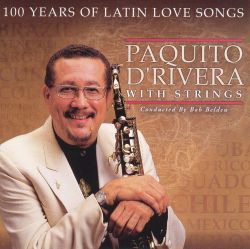Rhythmic Alchemy: Tracing the History of Latin Jazz
- Road Scholar Music
- Apr 26, 2020
- 2 min read
Updated: Sep 6, 2023
Latin Jazz Unveiled Latin Jazz, a captivating fusion of Jazz and Latin music rhythms, encompasses various styles, including Brazilian Jazz inspired by Bossa Nova. Yet, at its core lies Afro-Cuban Jazz, the genre's defining force. This journey through Afro-Cuban Jazz's history unravels its origins and evolution.
Habanera and the Jazz Prelude
The roots of Latin Jazz stretch back to the 1940s and 1950s, but hints of Afro-Cuban influences found their way into early Jazz. Jazz pioneer Jelly Roll Morton coined the term "Latin tinge" to allude to the rhythmic essence that permeated early 20th-century Jazz in New Orleans. The "Latin tinge" drew inspiration from the Cuban Habanera, a genre that thrived in Cuba's dance halls in the late 19th century. This rhythm left an indelible mark on Jazz expressions in New Orleans. The proximity between New Orleans and Havana allowed Cuban musicians to infuse elements from early American Jazz, creating a cross-cultural musical exchange.
Mario Bauza and Dizzy Gillespie: Pioneers of Fusion
In 1930, Cuban trumpeter Mario Bauza relocated to New York, bringing a profound understanding of Cuban music and a passion for American Jazz. He joined Chick Webb and Cab Calloway's big bands, immersing himself in the burgeoning Jazz scene.
In 1941, Bauza left Cab Calloway's orchestra to join Machito and the Afro-Cubans, where he served as the music director. In 1943, he composed "Tanga," hailed as the first Latin Jazz track in history. During his time with Chick Webb and Cab Calloway, Bauza crossed paths with a young trumpeter, Dizzy Gillespie. Their friendship and musical synergy became legendary. Mario Bauza introduced Gillespie to Afro-Cuban music, sparking a transformative fusion. Together, they composed iconic Latin Jazz tracks, including the legendary "Manteca."
The Mambo Era and Beyond: Latin Jazz's Flourishing Decades
In the early 1950s, the Mambo craze swept the world, propelling Latin Jazz to new heights. Maestros like Tito Puente, Cal Tjader, Mongo Santamaria, and Israel 'Cachao' Lopez infused Latin Jazz with vitality and popularity. The 1960s witnessed a shift from Mambo to Salsa, influencing Latin Jazz as artists navigated the emerging genre. Pioneers like pianist Eddie Palmieri and percussionist Ray Barreto from New York played pivotal roles, later joining the legendary Salsa band Fania All Stars. By 1972, Cuba introduced a game-changer: pianist Chucho Valdes founded Irakere, infusing Funk elements into traditional Latin Jazz, reshaping the genre's soundscape.
A Global Phenomenon: Latin Jazz Today
In recent decades, Latin Jazz has evolved into a global phenomenon, incorporating diverse elements from the Latin music universe. Esteemed artists like Chucho Valdes, Paquito D'Rivera, Eddie Palmieri, Poncho Sanchez, and Arturo Sandoval continue to shine, while a new generation, including Danilo Perez and David Sanchez, carries the torch.
Latin Jazz thrives as an ever-evolving musical realm, where rhythms, cultures, and innovations converge, ensuring its vibrant legacy endures.
Acknowledgement: Carlos Quintana (2017).










































Comments